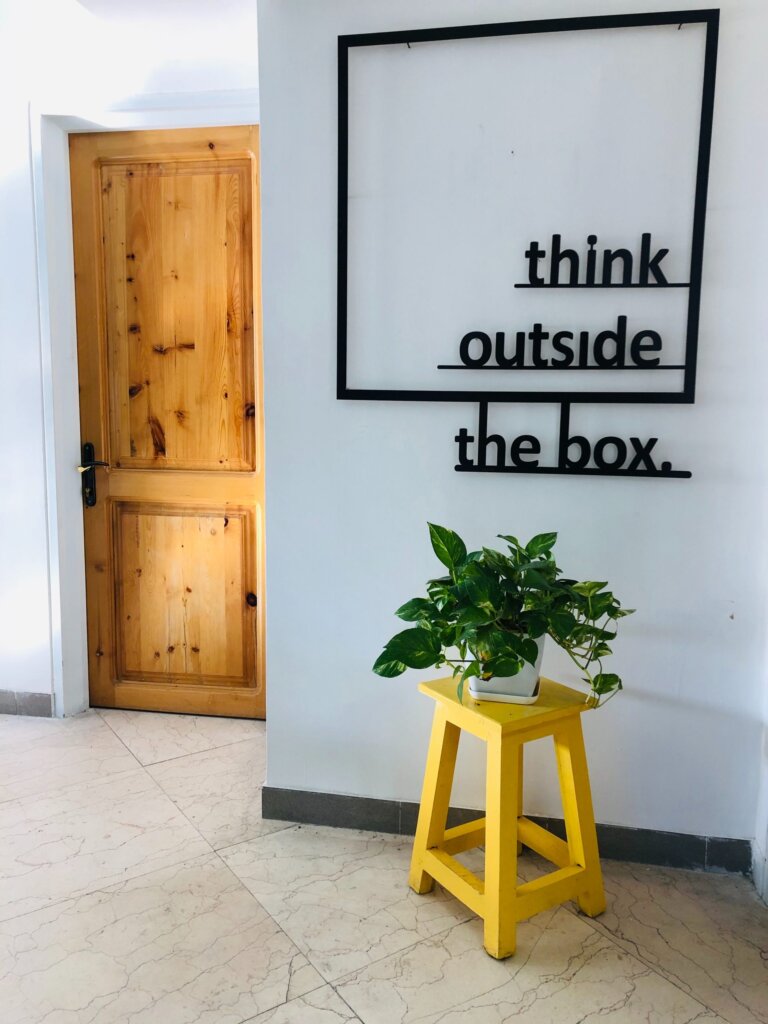High Road Leadership Preview: The 3 Leadership Roads We Can Take

The following blog post is an adapted excerpt from John Maxwell’s upcoming book, High Road Leadership: Bringing People Together in a World That Divides, releasing May 7. Click here to preorder the book today and receive $299 in bonuses.
What does it mean to be a giver? How do you think about generosity? Many people think those questions have to do with financial wealth. They think about people like Microsoft co-founder Bill Gates and Berkshire-Hathaway chairman and CEO Warren Buffet who famously created the Giving Pledge. In May 2009, they invited a group of fellow billionaires to a dinner gathering in New York City and challenged them to make “a moral commitment to give their fortunes to charity.” Buffet and Bill and Melinda Gates were already doing that. They convinced forty US billionaires to sign on that year, and eventually 241 people from 29 countries joined them. But that’s not really what generosity is about on the high road.
Leaders Influence and Add Value
For a high-road leader, the question has nothing to do with how much of your wealth or assets you are giving away. The question is much simpler: Every day of your life, are you giving more than you take? This applies to every aspect of a high-road leader’s life.
How can you add value to people? What do you have to give that will help others, bless them, show them they matter, and help them get ahead? Everyone on earth has something they can give. The question is whether you will decide to be generous and become intentional about giving. Here are some of the things we can give others as we travel the high road as leaders:
1. TALENT.
Every person on the planet has been gifted with talent of some kind, and that talent can be used to serve and add value to others. For example, I know one of my greatest talents is communication. I was born with speaking ability, and I’ve also worked hard to develop it. How do I give to others using that talent? Every time I am asked to speak, I do everything in my power to exceed expectations. I want every audience member who attends to feel like they got more than their money’s worth. I want every host who invites me to communicate to their crowd to feel like I gave more value to them and their people than they paid for.
Similarly, when I write a book, I want people to feel like they received more than they paid for. Yes, I always try to load every book with great content. And I love it when people tell me they read one of my books more than once to get everything out of it. But when someone pays money for a book, I want them to feel like they got something that can change their life. That’s worth way more than several dollars.
What are your talents, and how can you use them to give to others? Can you cook? Then you can provide others with great meals. Can you fix things? Then help your neighbors when something breaks down at their house. Are you a good organizer? Volunteer for a nonprofit to help them accomplish their mission with greater efficiency. Can you lead? Then use your skills to not only improve a team but to add value to each individual on it. All you need to do is approach tasks with a heart to serve and the desire to give more than you take.
2. TIME.
Each of us gets the same twenty-four hours every day. We all get seven days per week and no more. The only thing we don’t know is how many weeks we will get in our lifetime. It’s up to us whether we choose to give the time we have to others.
When Warren Buffett signed the Giving Pledge, he said he did so out of gratitude for his extraordinary good fortune. Interestingly, at the same time he noted that he was giving money rather than time. He wrote,
This pledge does not leave me contributing the most precious asset, which is time. Many people, including—I’m proud to say—my three children, give extensively of their own time and talents to help others. Gifts of this kind often prove far more valuable than money. A struggling child, befriended and nurtured by a caring mentor, receives a gift whose value far exceeds what can be bestowed by a check. My sister, Doris, extends significant person-to-person help daily. I’ve done little of this.
What I can do, however, is to take a pile of Berkshire Hathaway stock certificates—“claim checks” that when converted to cash can command far-ranging resources—and commit them to benefit others who, through the luck of the draw, have received the short straws in life.
How much time are you willing to give others without asking for anything in return? Can you mentor someone? Can you stop what you’re doing to assist someone who’s struggling? You never know when a moment will be precious to another person. And you will never find out unless you give it.
3. OPPORTUNITIES.
As leaders, one of the most important responsibilities we carry is the ability and willingness to give people opportunities. We can help people go places and do things they would never be able to do on their own. Sometimes those opportunities turn out great. Other times they don’t. But that’s part of being willing to give more than you take.
Marilyn Gist writes that the offering of opportunities starts with our awareness of the individual people we lead:
“Do You See Me?” is perhaps the most critical question people have when asked to work with a leader. It implies: Do I matter to you? Do you understand my view and my needs? Am I merely a pawn for you to use in achieving your goals, or do you care about me as a person with my own thoughts and needs? Do you get my potential as a partner in this work? And are you willing to work with me even though we will not always see eye to eye?
You won’t give to someone you don’t see as an individual person, as someone of value. This goes back to the need to value all people if you want to be a high-road leader. It also requires being intentional. Gist suggests that leaders make people feel seen and valued by being treated as partners in their work. This can be done using what Gist calls generous inclusion. She explains, “Inclusion means inviting people to be part of the real action.” Here’s how she suggests that should look:
| Do | Don’t |
| Encourage people to share ideas and feelings on important issues. | Limit participation to minor discussions and routine matters. |
| Notice when your power may cause others to defer to you unnecessarily, and encourage them to contribute. | Assume that others have little to offer. |
| Examine your attitudes toward diversity of all kinds. | Allow biases to result in excluding certain types of people. |
| Listen deeply – even when others present views that seem unfamiliar or uncomfortable. | Ignore others’ views or cut people off when they are opinions. |
| Present an emotionally welcoming demeanor. | Signal that you are too busy or disinterested to interact with others. |
I like the way she explains this. To me, generous inclusion means people don’t work for me. They work with me. And I look for opportunities I can give them to grow, develop, and rise to bigger and better things. If you possess any kind of leader’s role, you carry that same responsibility. While people are under your leadership, there are some things they will get to do only if you give them the opportunity.
4. CONNECTIONS.
For years I’ve talked about how I schedule lunches with people who are better leaders or more successful than I am so that I can ask questions and learn from them. I’ve explained these “learning lunches” before in my books. One of the questions I always ask at each lunch is, “Who do you know that I should know?” Their answers to that question have led to more great connections with other people than I could possibly count.
What I haven’t talked about before is how I turn that question around for the benefit of others. When I meet someone and get to know them, I think to myself, Who do I know that they should know? Then I find ways to connect them.
5. EXPERIENCES.
One of the best things you can do as a leader is give others experiences, especially if those experiences are something they cannot do for themselves. I do this intentionally all the time. I look ahead at my calendar and think through how I can include people in my own experiences or create new ones. Sometimes it means taking an employee with me. When I went on my first book tour for The 21 Irrefutable Laws of Leadership, I took my writing partner, Charlie Wetzel , with me on the private jet leased by my publisher so that we could experience that together. When my company plans an event like Exchange, which we describe as a leadership experience, we plan something they will always remember. One year we went to the New York Stock Exchange after-hours so participants could enjoy drinks and appetizers on the floor of the Exchange, eat dinner in the boardroom, and have their photos taken ringing the bell. Another year we took a private tour of the Churchill War Rooms in London, where they also got to meet and ask questions of Sir Nicholas Soames, Winston Churchill’s grandson.
I don’t do this only in my professional life. I also do it with my family. On their birthdays, each of my five grandchildren know an original poem written by their papa will be waiting for them when they wake up. One Christmas I encouraged the members of Margaret’s family, who are not naturally demonstrative, to share what they love and value about one another. To this day, they talk about that as one of their favorite Christmas memories.
I also look for opportunities to create experiences daily. I review my schedule every morning and I think about who I’ll be spending time with and what we will be doing. And I intentionally think of ways I can create experiences for people that are personal and meaningful. It may be as simple as signing a book and giving it to them or inviting people to the table for a special dinner and facilitating a great discussion by asking questions. All it takes is thinking ahead, thinking about the person, and doing something that makes them feel special and appreciated. Do that, and you will distinguish yourself as a leader.
Are you leading on the high road?
We’re living in a world where disagreement reigns and people are divided. Too many leaders are serving themselves. In High Road Leadership, foremost leadership expert John C. Maxwell teaches how to make your leadership rise so that you can bring people together and inspire them to achieve good results together. Click here to preorder the book today before its release on May 7th and receive $299 in bonuses.
More Articles

Do I Believe The Best In Others?

BIG ANNOUNCEMENT!









Be the first to comment on "High Road Leadership Preview: The 3 Leadership Roads We Can Take"